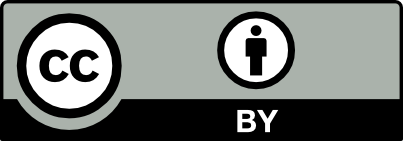| Name | Speichervolumen | Metadaten | Upload | Aktion |
|---|
Alternativer Identifier:
-
Ersteller/in:
Beitragende:
(Project Member)
(Project Member)
Bode, Matthias
https://orcid.org/0000-0001-7514-5560
[University of Würzburg]
(Project Member)
Thomale, Ronny
https://orcid.org/0000-0002-3979-8836
[University of Würzburg]
Titel:
Probing chiral symmetry with a topological domain wall sensor
Weitere Titel:
-
Beschreibung:
(Abstract)
Chiral symmetry is a fundamental property with profound implications for the characteristics of elementary particles, that implies a spectral symmetry (i.e. E -> -E ) in their dispersion relation. In condensed matter physics, chiral symmetry is often associated with superconducto...
(Other)
We acknowledges funding supported by Deutsche Forschungsgemeinschaft (DFG, German Research Foundation) through SFB 1170 Project No. 258499086 (project C02) and the Würzburg-Dresden Cluster of Excellence on Complexity and Topology in Quantum Matter – ct.qmat (EXC 2147, Project No. 390858490). T.N. a...
Schlagworte:
chiral symmetry
topological defects
topological crystalline insulators
Landau levels
Dirac fermions
topological defects
topological crystalline insulators
Landau levels
Dirac fermions
Sprache:
Englisch
Herausgeber/in:
Erstellungsjahr:
Fachgebiet:
Physics
Objekttyp:
(Dataset) STM and STS raw measurements data
Datenquelle:
(Instrument) STM
Verwendete Software:
Software für Datenerhebung
Software:
Nanonis STM controler SPECS - 4.0
Alternative Software:
-
Verwendete Software:
Software für Datenbearbeitung
Software:
WSxM - 5.0
Alternative Software:
Python - 3.13.0
Verwendete Software:
Software für Datenbetrachtung
Software:
Nanonis Scan Viewer - 4.0
Alternative Software:
Nanonis Data Viewer - 4.0
Datenverarbeitung:
The raw data was obtained and plotted in the same manner as presented in the paper, with minimal averaging applied to smooth the noise. The second derivative, d²I/dU², shown in the paper was calculated from the acquired dI/dU spectra using the Lock-In technique (see main text for details), averaged over an 8×Ubias window to improve the signal-to-noise ratio without losing key spectral features. All data was analyzed using a Python script, which is also included in the archive.
Erscheinungsjahr:
Rechteinhaber/in:
Odobesko, Artem
https://orcid.org/0000-0003-3414-067X
Bode, Matthias https://orcid.org/0000-0001-7514-5560
Förderung:
Deutsche Forschungsgemeinschaft
- (Komplexität und Topologie in Quantenmaterialien (CT.QMAT)) 390858490
Deutsche Forschungsgemeinschaft - (Ultrahochauflösende Oberflächenstudien an topologischen Supraleitern) 258499086
Deutsche Forschungsgemeinschaft - (Ultrahochauflösende Oberflächenstudien an topologischen Supraleitern) 258499086
Status:
Publiziert
Eingestellt von:
1e329b082ceddbc68d896fa4e3f2ea96
Erstellt am:
Archivierungsdatum:
2025-05-19
Archivgröße:
182,0 MB
Archiversteller:
dd7b509482ad0a11773b217cbbcdf32f
Archiv-Prüfsumme:
c1fbff920715571fa372099227b4d686
(MD5)
Standort
- Würzburg, GERMANY
